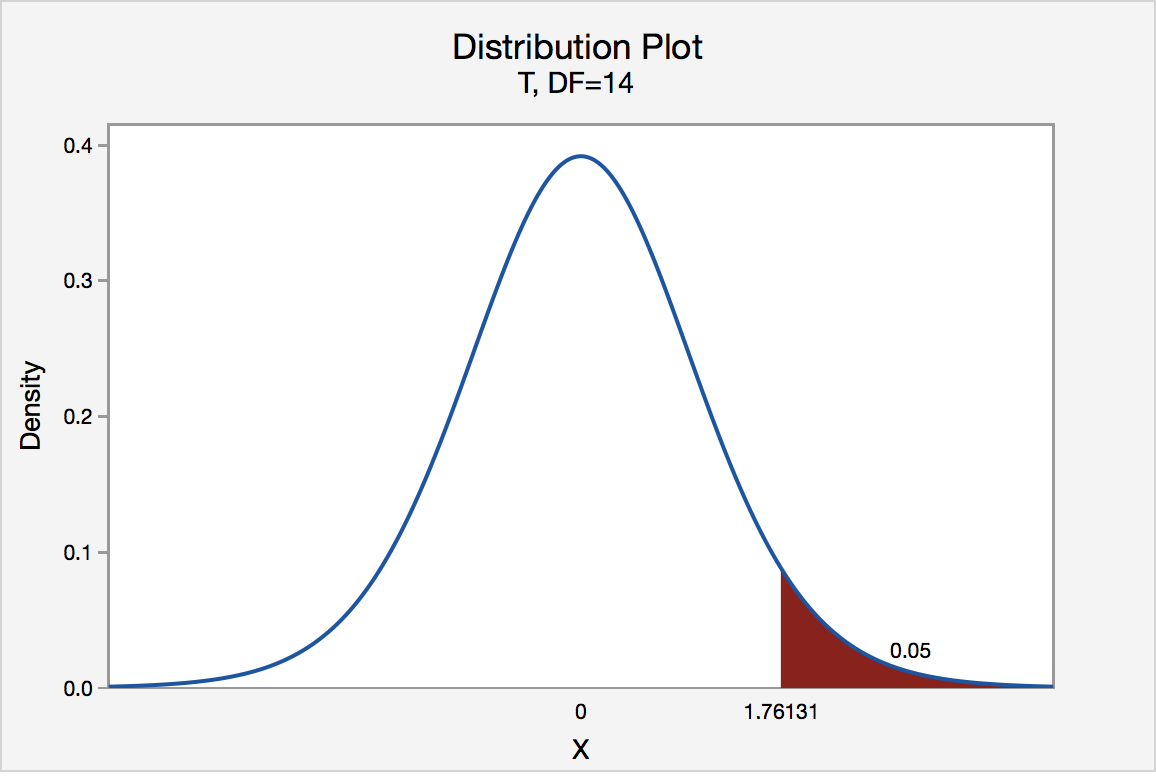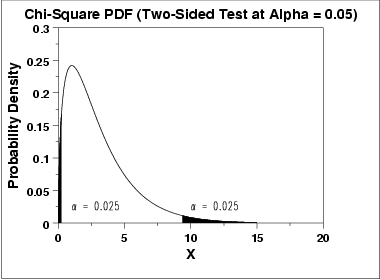Topic Stats how to find critical value: Looking to understand how to find critical value in statistics? Knowing the critical value is crucial for hypothesis testing and making informed decisions. By referencing reliable sources like \"Statistics for Business & Economics (13th Edition)\" or accessing reference data, you can easily calculate the alpha value using the formula α = 1 - (confidence level / 100). This helps determine the critical probability, enabling you to accurately interpret your hypothesis test results. Understanding these concepts empowers you to confidently analyze data and draw meaningful conclusions.
Table of Content
- How do I find the critical value in statistics?
- What is the significance level in hypothesis testing?
- How do you calculate the alpha value for finding the critical probability?
- YOUTUBE: Finding critical values for hypothesis tests: z vs t table
- What is the formula to calculate the critical value?
- How do you determine if the critical value is for an upper-tailed or lower-tailed test?
- Can you explain the concept of confidence level in relation to finding the critical value?
- What does it mean when the critical value is calculated for a two-tailed test?
- How does the critical value relate to the rejection region in hypothesis testing?
- Are there different methods to find the critical value based on the type of statistical test being performed?
- Can you provide an example calculation for finding the critical value in a specific hypothesis testing scenario?
How do I find the critical value in statistics?
To find the critical value in statistics, follow these steps:
1. Determine the significance level (α) or confidence level: The significance level represents the probability of making a Type I error, which is rejecting a true null hypothesis. Commonly used significance levels include 0.05 (95% confidence level) and 0.01 (99% confidence level).
2. Determine the degrees of freedom: The degrees of freedom depend on the specific statistical test being conducted. For example, in a t-test, the degrees of freedom are determined by the sample size and the number of groups being compared.
3. Choose the appropriate statistical distribution: The choice of distribution depends on the specific statistical test and the underlying assumptions. Commonly used distributions include the t-distribution for small sample sizes and the standard normal distribution (z-distribution) for large sample sizes.
4. Determine if the test is one-tailed or two-tailed: A one-tailed test is used to test a specific direction of effect (e.g., testing if the mean is greater than a certain value), while a two-tailed test is used to test for a difference in either direction (e.g., testing if the mean is different from a certain value).
5. Look up the critical value in the corresponding distribution table: Use the alpha level, degrees of freedom, and type of test (one-tailed or two-tailed) to find the critical value in the table. The critical value represents the cutoff point beyond which the test statistic is considered significant.
Alternatively, you can also use statistical software or online calculators to find the critical value automatically by inputting the necessary parameters.
Remember, the critical value is an essential component in hypothesis testing as it helps determine whether the obtained test statistic falls in the critical region, leading to rejection or acceptance of the null hypothesis.

What is the significance level in hypothesis testing?
The significance level, denoted by α (alpha), is a predetermined threshold that is used to determine the level of evidence needed to reject the null hypothesis in hypothesis testing. It represents the maximum probability of making a Type I error, which is the incorrect rejection of a true null hypothesis.
In hypothesis testing, we have a null hypothesis (H0), which is the hypothesis that there is no significant difference or relationship between variables, and an alternative hypothesis (H1), which is the hypothesis that contradicts the null hypothesis and suggests there is a significant difference or relationship between variables.
The significance level is chosen by the researcher or statistician before conducting the test and is typically set at 0.05 or 0.01, although other values can also be used. A significance level of 0.05 means that we are willing to accept a 5% chance of making a Type I error. Similarly, a significance level of 0.01 means that we are willing to accept a 1% chance of making a Type I error.
Once the significance level is determined, it is used to compare the p-value obtained from the test statistic to make a decision. The p-value represents the probability of obtaining a test statistic as extreme or more extreme than the one observed, assuming that the null hypothesis is true.
If the p-value is less than or equal to the significance level (p ⤠α), we reject the null hypothesis and conclude that there is sufficient evidence to support the alternative hypothesis. On the other hand, if the p-value is greater than the significance level (p > α), we fail to reject the null hypothesis and conclude that there is not enough evidence to support the alternative hypothesis.
How do you calculate the alpha value for finding the critical probability?
To calculate the alpha value for finding the critical probability, follow these steps:
Step 1: Determine the confidence level.
The confidence level is the complement of alpha and represents the percentage of confidence in the statistical test. For example, if you have a 95% confidence level, the alpha value would be 1 - (95/100) = 0.05.
Step 2: Calculate the alpha value.
The alpha value is the significance level of the hypothesis test and is equal to 1 minus the confidence level. So, if you have a 95% confidence level, the alpha value would be 1 - 0.95 = 0.05.
Step 3: Use the alpha value to find the critical value.
The critical value is determined based on the alpha value and the type of statistical test being conducted. For example, if you are conducting a hypothesis test using a standard normal distribution (Z-test), you can find the critical value using a standard normal distribution table or a calculator.
Let\'s say you have a two-tailed test and a 95% confidence level. To find the critical value, you need to divide the alpha value (0.05) by 2 to get 0.025 for each tail. Lookup the corresponding z-value in the standard normal distribution table for an area of 0.025 (using the absolute value since it\'s a two-tailed test). Let\'s assume the critical value is -1.96.
The critical value will differ based on the confidence level, one-tailed or two-tailed test, and the distribution you are using (e.g., t-distribution for small samples).
Remember that the process may vary depending on the type of statistical test and the distribution used. Make sure to consult appropriate resources or seek guidance from a statistician when conducting specific analyses.
Finding critical values for hypothesis tests: z vs t table
Discover the power of hypothesis tests and unlock a world of data-driven insights! Watch our captivating video that explains the step-by-step process of conducting hypothesis tests with real-life examples. Learn how to make confident decisions based on solid statistical evidence - you won\'t want to miss it!
What is the formula to calculate the critical value?
The formula to calculate the critical value depends on the type of distribution you are working with. Here are the formulas for some common distributions:
1. For a normal distribution: The critical value can be found using the Z-score table or by using the inverse cumulative distribution function (CDF) of the standard normal distribution. The formula is:
Critical Value = Zα * Ï + μ
where Zα is the Z-score corresponding to the desired level of significance (alpha), Ï is the standard deviation of the population, and μ is the mean of the population.
2. For a t-distribution: The critical value can be found using the t-distribution table or by using the inverse cumulative distribution function (CDF) of the t-distribution. The formula is:
Critical Value = tα * (s / ân)
where tα is the t-score corresponding to the desired level of significance (alpha), s is the sample standard deviation, and n is the sample size.
3. For a chi-square distribution: The critical value can be found using the chi-square distribution table or by using the inverse cumulative distribution function (CDF) of the chi-square distribution. The formula is:
Critical Value = ϲα (df)
where ϲα is the chi-square value corresponding to the desired level of significance (alpha) and df is the degrees of freedom.
It\'s important to note that the specific formula to calculate the critical value may vary depending on the context and the specific hypothesis test being conducted. Therefore, it\'s recommended to consult a statistics textbook or use software like Excel or statistical packages to find the appropriate critical value for your specific scenario.
How do you determine if the critical value is for an upper-tailed or lower-tailed test?
To determine if the critical value is for an upper-tailed or lower-tailed test, you need to consider the alternative hypothesis in your hypothesis test.
In a hypothesis test, you have a null hypothesis (H0) and an alternative hypothesis (Ha). The null hypothesis represents the default position or the absence of an effect, while the alternative hypothesis represents the research question or the presence of an effect.
For an upper-tailed test, the alternative hypothesis (Ha) typically states that the parameter of interest is greater than a certain value. For example, if you are testing whether the mean height of a population is greater than 170 cm, the alternative hypothesis would be Ha: μ > 170.
In a lower-tailed test, the alternative hypothesis (Ha) states that the parameter of interest is less than a certain value. Continuing with the height example, if you are testing whether the mean height is less than 170 cm, the alternative hypothesis would be Ha: μ < 170.
Now, to determine if the critical value is for an upper-tailed or lower-tailed test, you need to check whether the alternative hypothesis is stated as greater than (>) or less than (<).
If the alternative hypothesis states greater than (>), it corresponds to an upper-tailed test. In this case, the critical value will be on the right side of the distribution.
If the alternative hypothesis states less than (<), it corresponds to a lower-tailed test. In this case, the critical value will be on the left side of the distribution.
By understanding the direction of the alternative hypothesis, you can determine whether the critical value is for an upper-tailed or lower-tailed test.

_HOOK_
Can you explain the concept of confidence level in relation to finding the critical value?
The confidence level is a statistical concept that measures the level of certainty or reliability we have in the results of a statistical analysis. It represents the probability that the true parameter or population value lies within a certain range.
When finding the critical value, the confidence level is used to determine the significance level of the hypothesis test. The significance level, denoted as alpha (α), is the probability of rejecting the null hypothesis when it is actually true. It serves as a threshold for determining whether the test statistic falls in the critical region, leading to the rejection of the null hypothesis.
To find the critical value, you first need to determine the desired confidence level. This is typically expressed as a percentage, such as 90%, 95%, or 99%. The confidence level represents the proportion of confidence intervals constructed from repeated sampling that would contain the true parameter.
Once you have the confidence level, you can calculate the significance level (alpha) using the formula: alpha = 1 - (confidence level / 100). For example, if the confidence level is 95%, then alpha would be 0.05.
The critical value is then determined based on the significance level and the specific hypothesis test being conducted. It is typically obtained from a statistical table or using software programs. The critical value corresponds to the specific proportion of the distribution\'s tail beyond which the null hypothesis is rejected.
In summary, the confidence level is used to calculate the significance level, and the significance level is used to find the critical value. The critical value is a threshold that helps in making decisions about rejecting or failing to reject the null hypothesis based on the observed test statistic.
Finding critical values for confidence levels
Boost your statistical expertise by diving into the fascinating world of confidence levels! Join us in this eye-opening video that demystifies confidence intervals and demonstrates how to effectively interpret them. Expand your knowledge and gain the confidence to make accurate conclusions - click play now!
AP Statistics: Finding z* for a given confidence level | Khan Academy
Are you struggling with AP Statistics? Fear no more! Our comprehensive video tutorial simplifies the key concepts and problem-solving techniques of AP Statistics, helping you master the subject with ease. Take your understanding to the next level and ace your exams by watching this engaging and informative video!
What does it mean when the critical value is calculated for a two-tailed test?
When the critical value is calculated for a two-tailed test, it means that we are conducting a hypothesis test where we are interested in determining if the population parameter is significantly different from a specific value, but we do not have any specific directional expectation.
To find the critical value for a two-tailed test, we typically follow these steps:
1. Determine the significance level (α) for the test. The significance level is the probability of rejecting the null hypothesis when it is actually true. Commonly used values for α are 0.05 (5%) or 0.01 (1%), but they can vary depending on the context and desired level of confidence.
2. Divide the significance level by 2. Since it is a two-tailed test, we need to consider both tails of the distribution. Dividing the significance level by 2 ensures that each tail receives an equal amount of significance level. For example, if α = 0.05, then we would divide it by 2 to get 0.025 for each tail.
3. Look up the critical value in the appropriate table or use statistical software. The critical value is determined based on the chosen significance level and the specific distribution (e.g., Z-table, T-table, etc.) that corresponds to the test statistic being used.
4. For a two-tailed test using a Z-distribution, the critical value will be symmetrically located around zero. This means that there will be a positive critical value and a negative critical value, with the tails representing the extreme values in each direction.
5. The critical value represents the boundary beyond which we would reject the null hypothesis. If the test statistic falls in either of the tails beyond the critical value, it provides evidence to reject the null hypothesis in favor of the alternative hypothesis. If the test statistic falls within the range defined by the critical value, we would fail to reject the null hypothesis.
In summary, when calculating the critical value for a two-tailed test, we divide the significance level by 2 to account for both tails, find the corresponding critical values in the distribution, and use them to define the regions of rejection for the test statistic.
How does the critical value relate to the rejection region in hypothesis testing?
In hypothesis testing, the critical value is a threshold that helps determine whether to reject the null hypothesis. It is compared to the test statistic to make a decision about the hypothesis being tested. The critical value is based on the significance level chosen for the test.
The significance level, also known as alpha (α), represents the probability of rejecting the null hypothesis when it is actually true. The rejection region is a range of values of the test statistic that, if exceeded by the observed test statistic, will lead to the rejection of the null hypothesis.
The critical value marks the boundary of the rejection region. If the test statistic falls within the rejection region (i.e., exceeds the critical value), then the null hypothesis is rejected in favor of the alternative hypothesis. On the other hand, if the test statistic falls outside the rejection region (i.e., does not exceed the critical value), then there is insufficient evidence to reject the null hypothesis.
The critical value is determined by the chosen significance level and the distribution of the test statistic. For example, in a standard normal distribution, the critical values are the z-scores corresponding to the desired significance level. These critical values can be found using statistical tables or calculators.
In summary, the critical value is used to determine the rejection region in hypothesis testing. It helps establish a threshold beyond which the null hypothesis is rejected, based on the chosen significance level. If the test statistic falls within the rejection region (exceeds the critical value), the null hypothesis is rejected; otherwise, it is not rejected.
Are there different methods to find the critical value based on the type of statistical test being performed?
Yes, there are different methods to find the critical value based on the type of statistical test being performed. The specific method used depends on the distribution of the test statistic for the given test.
1. For tests involving the normal distribution (e.g., z-tests and tests involving the standard normal distribution), the critical values can be directly obtained from a standard normal distribution table or using statistical software. The critical values are usually obtained based on a given significance level, alpha, which represents the maximum acceptable probability of making a Type I error (rejecting the null hypothesis when it is true).
2. For tests involving t-distributions (e.g., t-tests for small sample sizes or when population standard deviation is unknown), the critical values can be derived from the t-distribution table or using statistical software. Similar to the normal distribution, the critical values depend on the desired significance level (alpha) and the degrees of freedom associated with the sample.
3. For tests involving the chi-square distribution (e.g., chi-square tests of independence or goodness-of-fit tests), the critical values can be obtained from the chi-square distribution tables or using statistical software. The critical values are determined based on the desired significance level (alpha) and the degrees of freedom associated with the test.
4. For tests involving F-distributions (e.g., ANOVA or regression analysis), the critical values can be derived from the F-distribution table or using statistical software. The critical values depend on the desired significance level (alpha) and the degrees of freedom associated with the numerator and denominator of the F-statistic.
These are just a few examples of different methods to find critical values based on the type of statistical test being conducted. It is important to consult appropriate references, such as textbooks or reliable statistical sources, or use statistical software to determine the specific critical values needed for a given test.

Can you provide an example calculation for finding the critical value in a specific hypothesis testing scenario?
Sure! I\'d be happy to provide an example calculation for finding the critical value in a specific hypothesis testing scenario.
Let\'s say we have a hypothesis test where we want to test if the mean height of a population is significantly different from a claimed value of 68 inches. We\'ll use a significance level of 0.05.
1. Determine the significance level (alpha): In this example, the significance level is 0.05, which means we are willing to accept a 5% chance of making a Type I error (rejecting the null hypothesis when it is actually true).
2. Determine the degrees of freedom: The degrees of freedom depend on the specific test and the sample size. In this example, let\'s say we have a sample size of 25. For a one-sample t-test, the degrees of freedom would be (n-1), so it would be (25-1) = 24.
3. Determine the critical value: In this example, we are conducting a two-tailed test since we want to test if the mean is \"significantly different\" from the claimed value. Therefore, we need to split our alpha level equally between the two tails of the distribution.
To find the critical value, we need to consult the t-distribution table or use statistical software. Let\'s assume that the critical value for a two-tailed test at a significance level of 0.05 with 24 degrees of freedom is 2.064.
It means that any test statistic greater than 2.064 or less than -2.064 would lead us to reject the null hypothesis in favor of the alternative hypothesis, indicating a significant difference in the mean height.
Keep in mind that the critical value can change depending on the significance level, the specific test, and the degrees of freedom. So, it\'s essential to consult the appropriate table or use statistical software for accurate calculations.
I hope this helps! Let me know if you have any further questions.
_HOOK_










